Are you a plotter who loves to have all of your characters’ story details firmly in mind before you write your first sentence? Looking for a fresh and unique way to construct your novel? If your answer to either of these questions is yes, you’ll enjoy the Snowflake Method. This tried-and-true plotting approach is also great for character-building.
Keep reading to learn how Plottr helps you create vivid characters using this system.
What is the Snowflake Method?
Designed by award-winning novelist Randy Ingermanson, the Snowflake Method is based on a pattern known to mathematicians as the snowflake fractal.
The basic idea is that, just as a snowflake consists of many highly organized parts, all the elements of a successful novel need to be well-designed and connected. After all, readers won’t stick with a confusing story that doesn’t make sense, or care about characters who don’t ring true.
Use this method to plot stories and character arcs that are highly structured and complex, so that they will entertain and surprise readers and make them think.
Read Ingermanson’s book to learn more about the Snowflake Method’s concepts and origins.
5 Reasons the Snowflake Method Builds Stronger Characters
If you love to craft story outlines, then you should give this approach a try! Detailed, pre-planned structure (and knowing your characters’ goals and motives well) will help you draft with fuller freedom later.
The Snowflake Method is particularly useful if your story has a complex, layered plot, with many characters you need to keep straight — such as in a mystery or thriller with multiple twists and perspective changes.
The Snowflake Method for character development is helpful because:
- It helps you turn vague ideas into concrete characters. Maybe you have a name and description so far, or a fascinating backstory. Perhaps you just need a little help turning these beginnings into a three-dimensional character. This method helps you think about your characters’ roles, goals, values and more. You’ll refine a clear character synopsis as you proceed.
- You’ll create consistency in your characterization. You’ll ensure consistent character motivations and behaviors from start to finish in your story. Begin with the basics of your character and build a detailed character summary that provides a reference tool from there.
- Firmly connect your characters’ arcs to your plot. The best stories do not only give readers an exciting sequence of events. They also show how these events change and transform characters. The Snowflake Method will help you keep your cast connected to your plot (keeping in focus what each character wants to accomplish). It will help you define each character’s arc clearly.
- Structure subplots and secondary character arcs without losing the main story thread. Your secondary characters and the subplots they introduce should enrich and enliven your story, not distract from its main threads and themes. Building layers of interlocking character ambitions, roles and goals more thoughtfully will help you avoid irrelevant, focus-diluting tangents.
- Regular character checking will develop your story and cast. The Snowflake Method asks you to monitor characters’ motivations and development throughout the plot-building process. This helps you stay accountable to characters’ shifting wants and needs as your story grows. It allows growth as the story evolves, resulting in a much more compelling, affecting story.
Introducing the Snowflake Method Character Template in Plottr
Soon, we’ll share guides walking you through how to use the Snowflake Method for your whole plot. For now, let’s take a closer look at Plottr’s Snowflake Method character template, and how it can help you flesh out varied story roles.
The Snowflake Method Character Template in Plottr focuses on how to develop memorable characters at the planning stage.
Once you add the template to a character profile, you’ll find the following sections with text boxes for you to input details:
- Role: The main role your character will play in the story
- Values: Important beliefs that will influence your character’s thoughts and deeds
- One Sentence Summary: A very brief summary of who your character is
- One Paragraph Summary: A slightly longer summary, still including only the essentials
- Character Basics: Physical attributes such as height, weight, hair color, ethnic heritage, and so on
- Character Synopsis: A more expansive character summary (as long or succinct as you choose)
Pro tip: quick summaries are a hallmark of the Snowflake Method and will be the root of your plot-building moving forward, so make sure you are thoughtful and intentional as you write them!
Example Using the Snowflake Method Character Template
Let’s take a look at the Plottr template in action, using the famous lawyer Atticus Finch, from Harper Lee’s classic novel To Kill a Mockingbird.
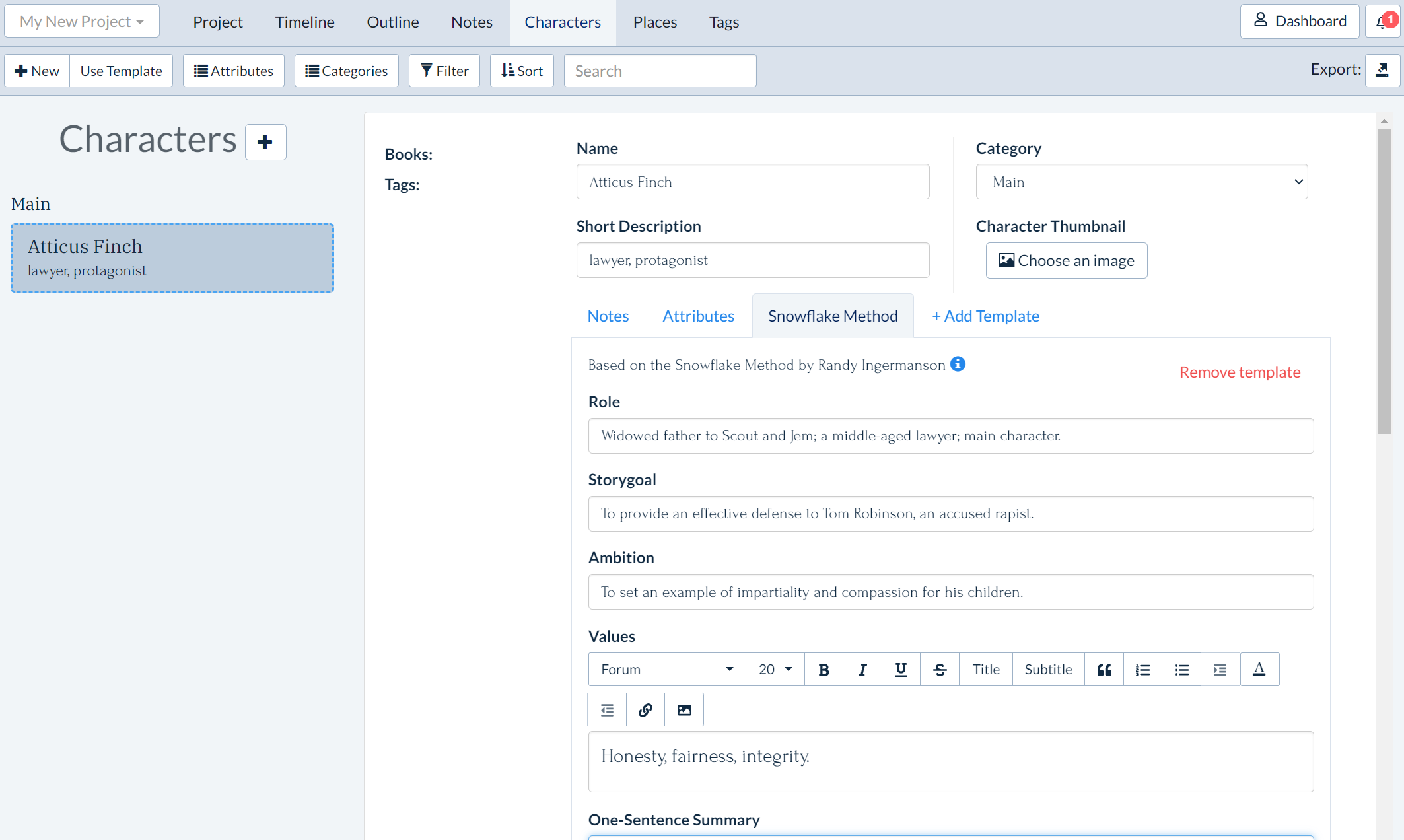
Character summary of Atticus Finch
Here is an example of how we could plan Atticus’ attributes in Plottr (if we were Harper Lee outlining her classic):
- Role: Widowed father to Scout and Jem; a middle-aged lawyer; main character
- Story Goal: To provide an effective defense to Tom Robinson, a black man accused of rape
- Ambition: To set an example of impartiality and compassion for his children
- Values: Honesty, fairness, integrity
- One sentence summary: A Southern criminal defense lawyer tackles a racist white culture in 1930s Alabama
- One paragraph summary: A widowed father and well-known lawyer, Atticus Finch, takes on the challenge of a lifetime when he agrees to defend Tom Robinson, a black man accused of raping a white woman in 1930s Maycomb, Alabama
- Character basics: Dark hair and eyes, six feet tall with a slender build, Caucasian, 45 years old
Character Synopsis
As a widowed father, Atticus’s main focus is on raising his two young children: his son Jem and daughter Scout. He’s a fair, mild-mannered yet strict father in line with the times, who endeavors to instill in his children a good work ethic, along with honesty, integrity, and the ability to see things through other people’s eyes before judging them.
As a defense attorney, Atticus supports his family by taking on mostly small, local cases in his southern hometown of Maycomb. But his values and abilities are put to the test when he agrees to defend Tom Robinson, an African American man accused of raping a white woman by the name of Mayella Ewell.
Because of their father’s decision to represent Tom, Jem and Scout are subjected to abuse by the white community. But they are embraced by the warm and welcoming black community. Tom Robinson is placed in the local jail and a mob gathers in order to lynch him before a trial can even begin. In a heroic show of courage, Atticus faces the mob down.
Despite a powerful defense and convincing evidence as to his innocence, Tom is ultimately convicted and is later shot while trying to escape from jail. It’s a devastating outcome for Atticus and his supporters, but in the end, he at least succeeds in teaching his children an invaluable lesson about having compassion during even the most challenging situations.
How to Use Plottr’s Snowflake Method Character Template
Are you ready to give the template a try? First, you’ll need to purchase Plottr or sign up for a free trial.
Once Plottr is installed on your computer, follow these steps to add the Snowflake Method template to a character:
- Step 1: Open Plottr and start a new project (or open an existing one)
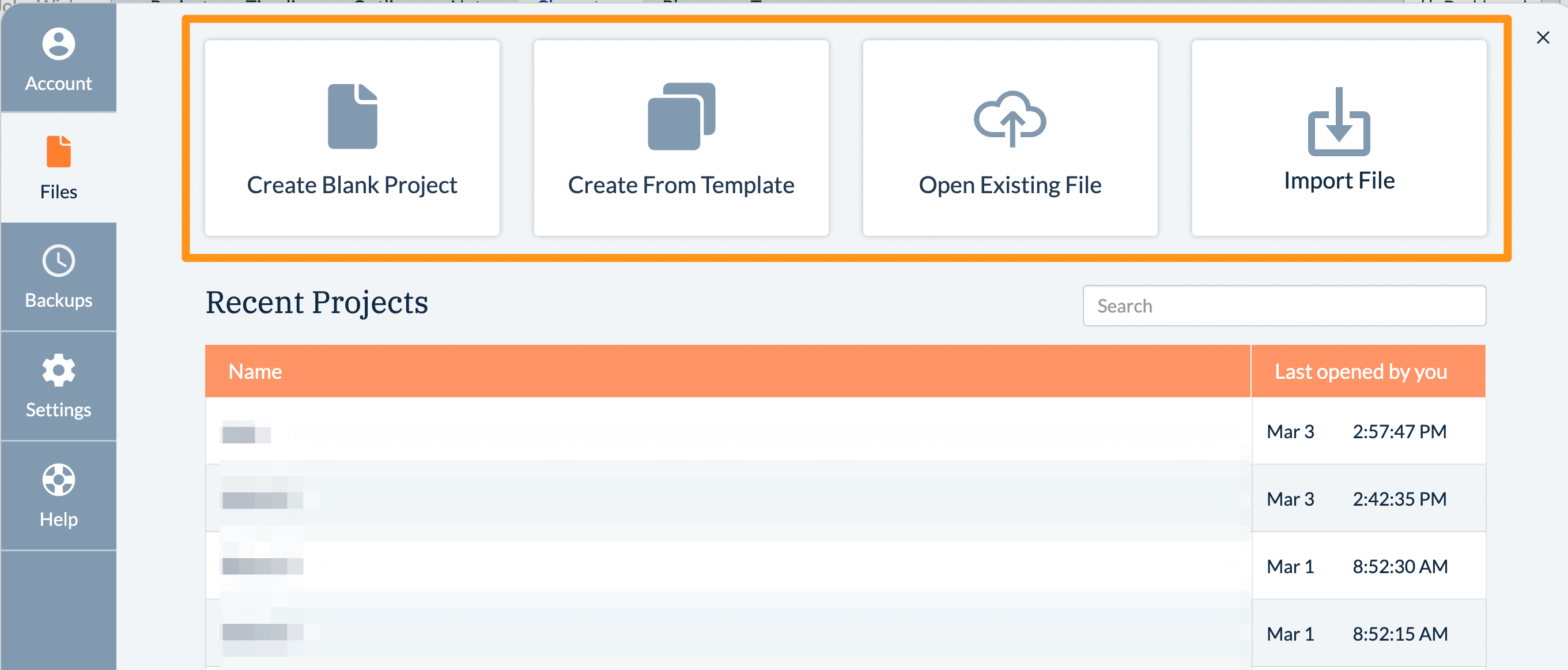
- Step 2: Once the project is open, navigate to the Characters tab and create a new character (or edit an existing one)
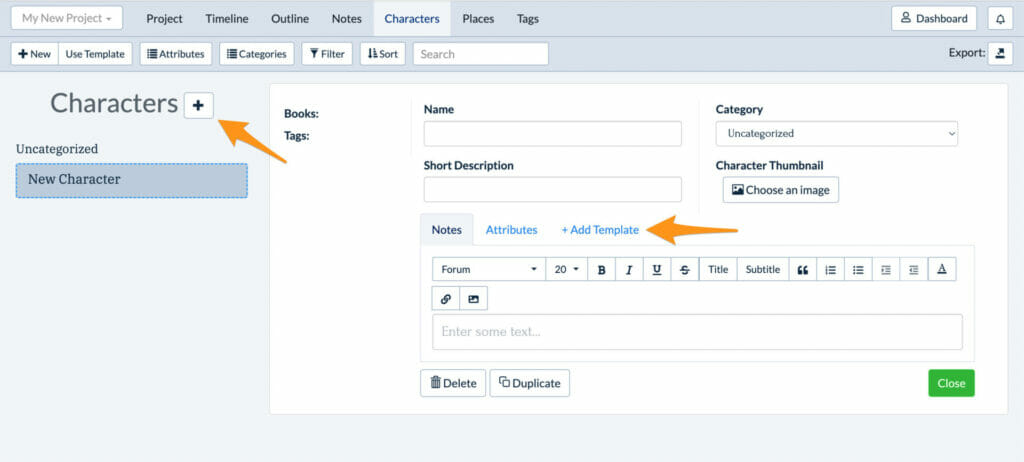
Step 3: Click +Add template in the character editing pane and select Snowflake Method from the menu of options. Click the Choose button to add the template to your character profile
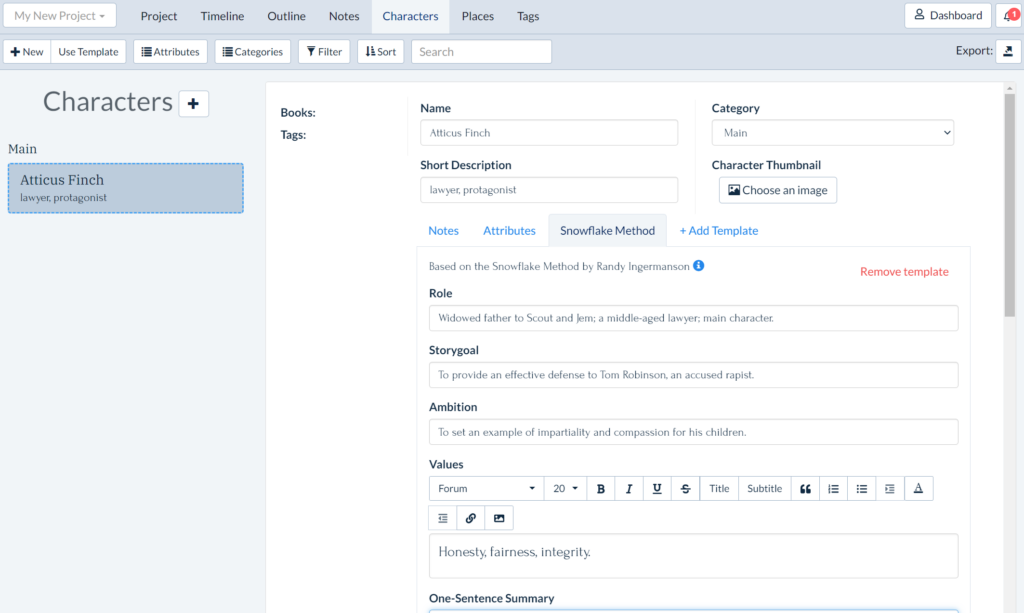
- Step 4: Start filling in details in your new character template!
And there you go! You’re on your way to crafting a well-organized character outline.
If you’d like to dig deeper, the Snowflake Method template also pairs well with these other character summaries in Plottr:
Plan Your Masterpiece with the Snowflake Method
Start brainstorming the many nuanced qualities of your characters in this Plottr template right now — just open up the app or sign up for a free Plottr trial to get started.
Have you created other character profiles with our templates, or is this your first one? Let us know what you think in the comments below!
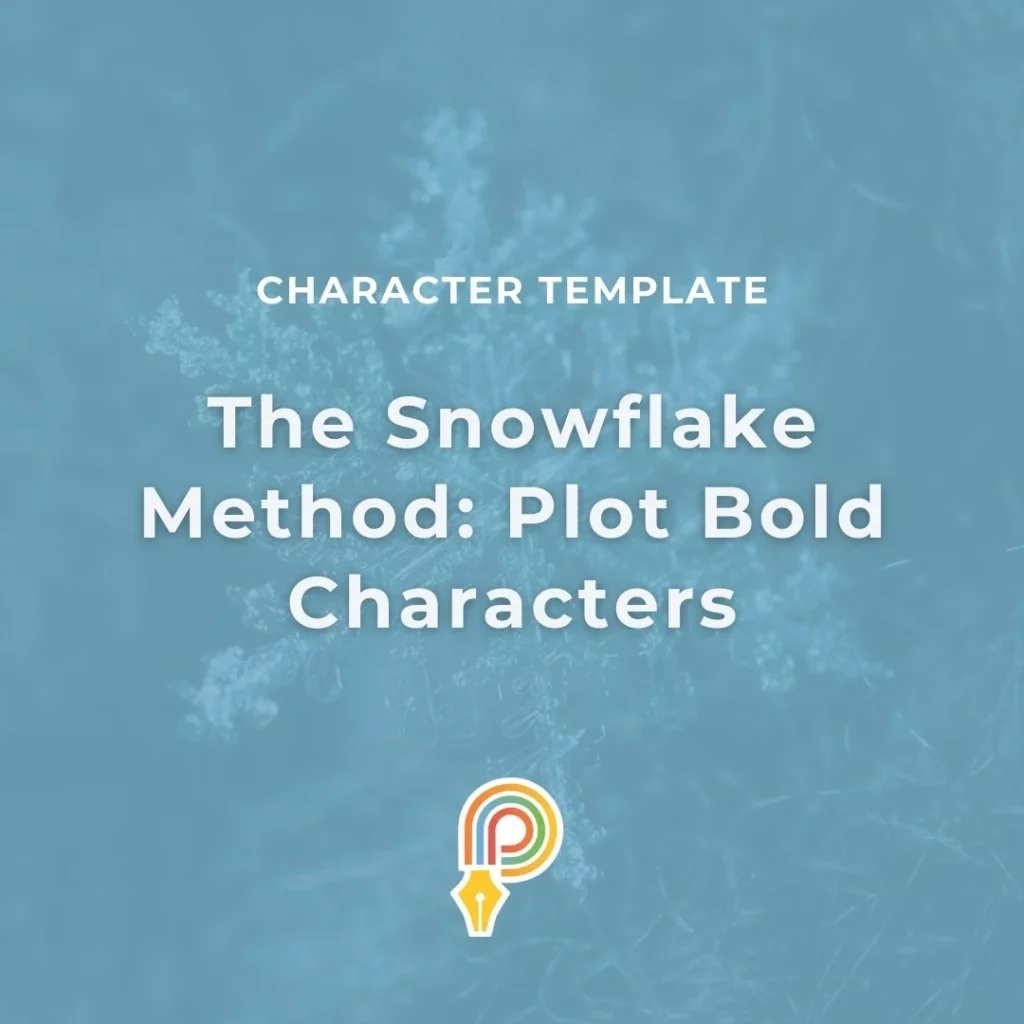




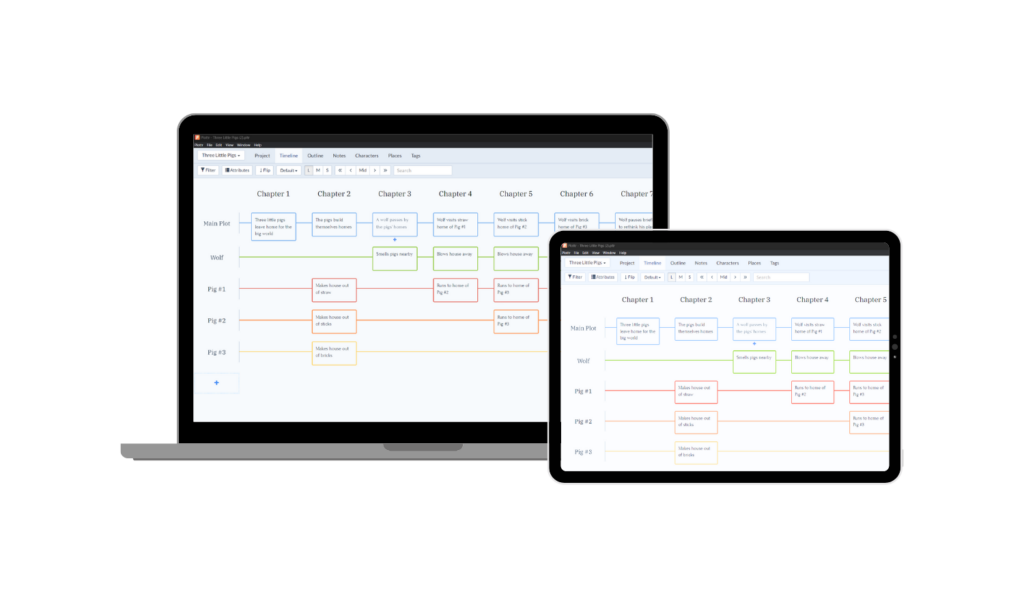
Comments